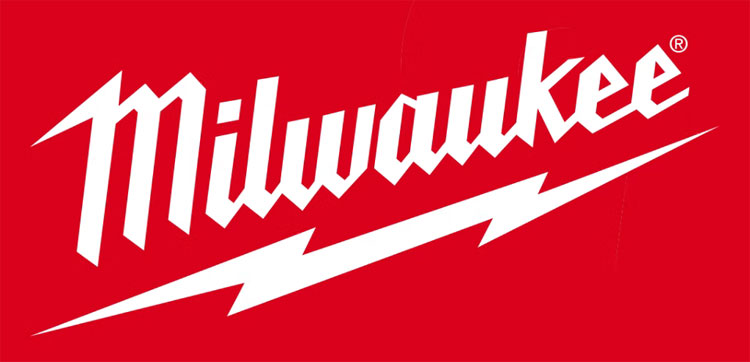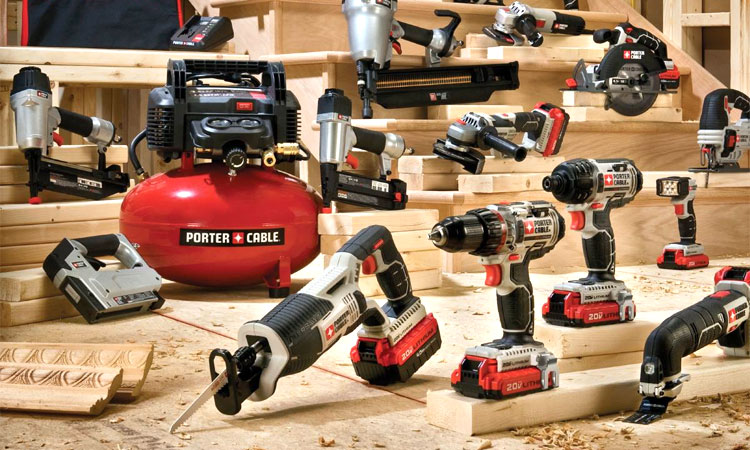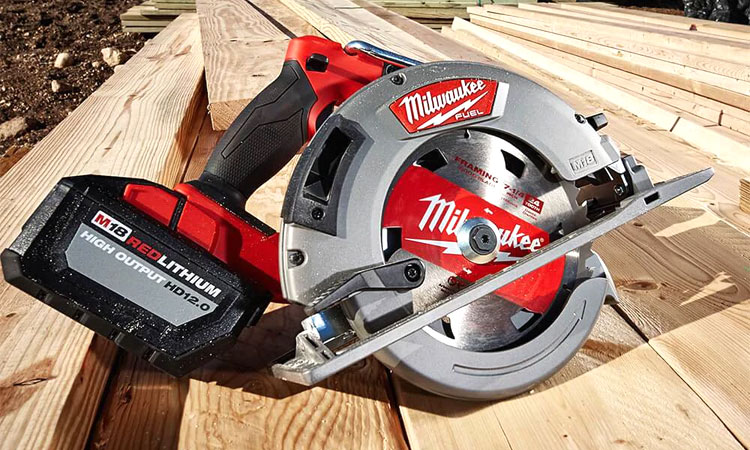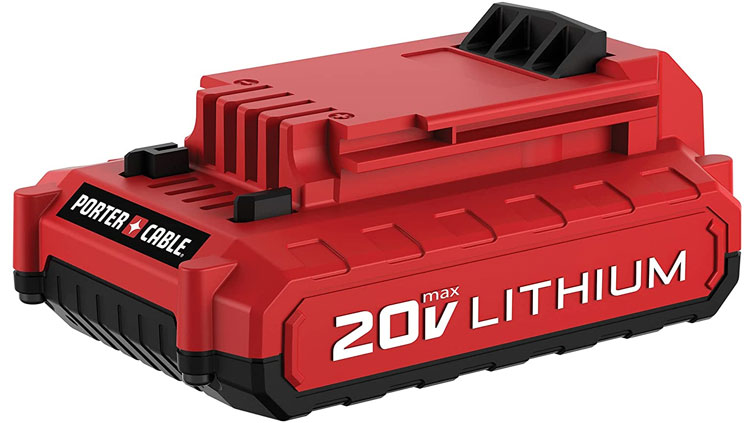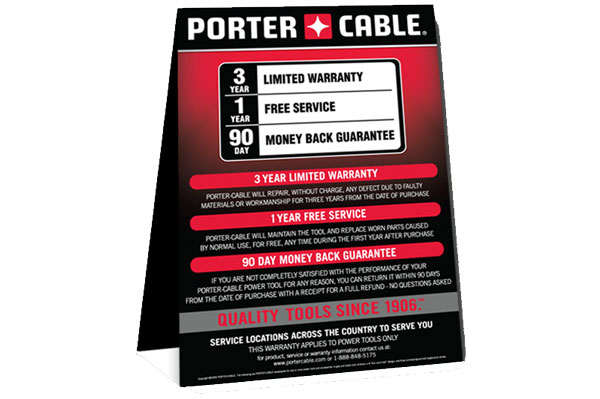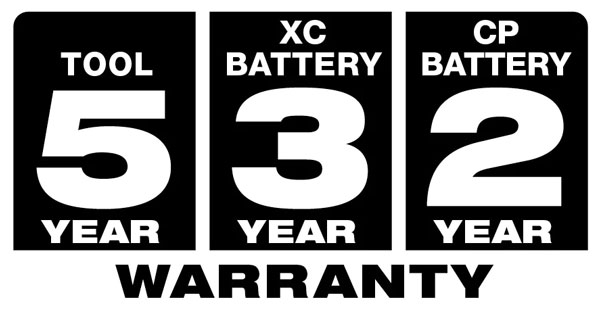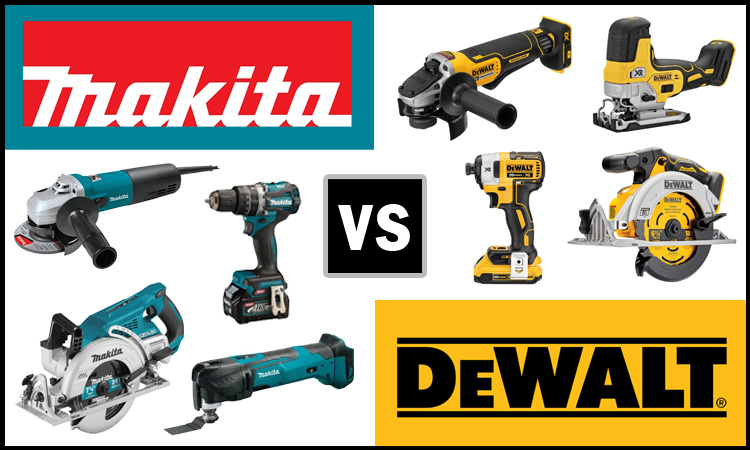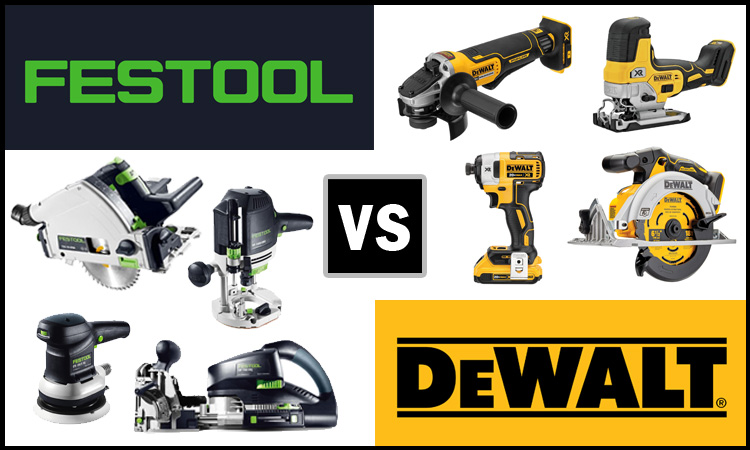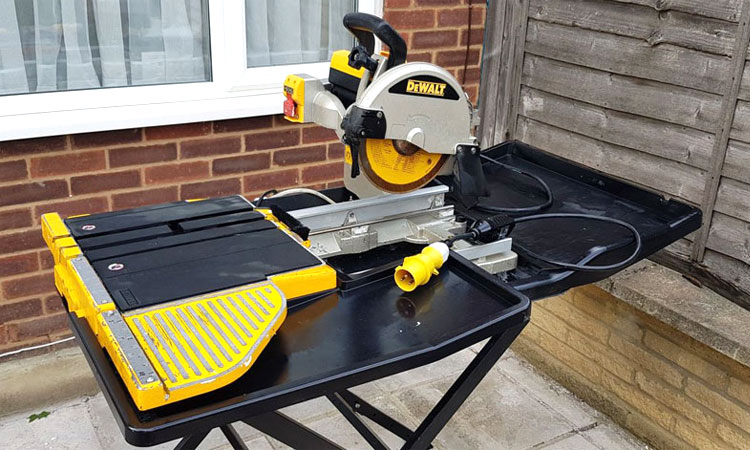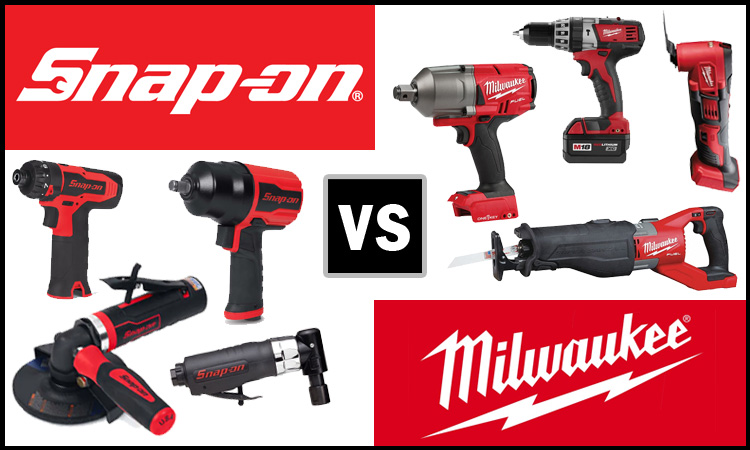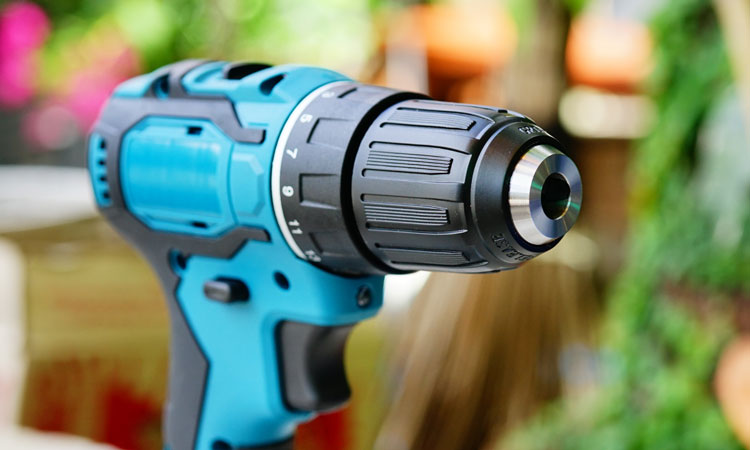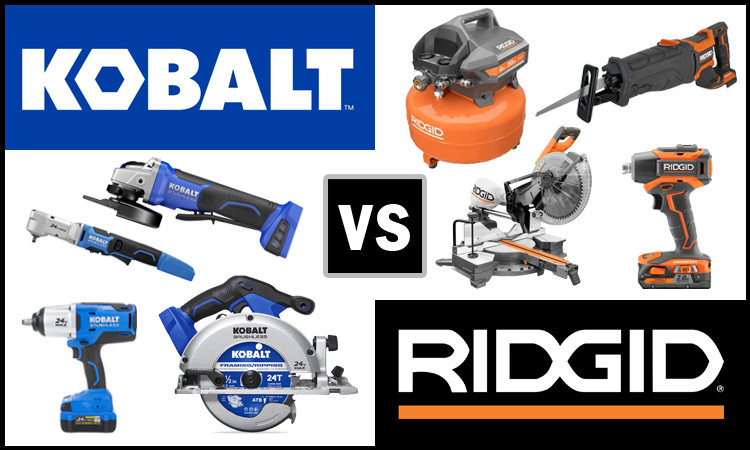Porter-Cable vs Milwaukee (Which is Better?)
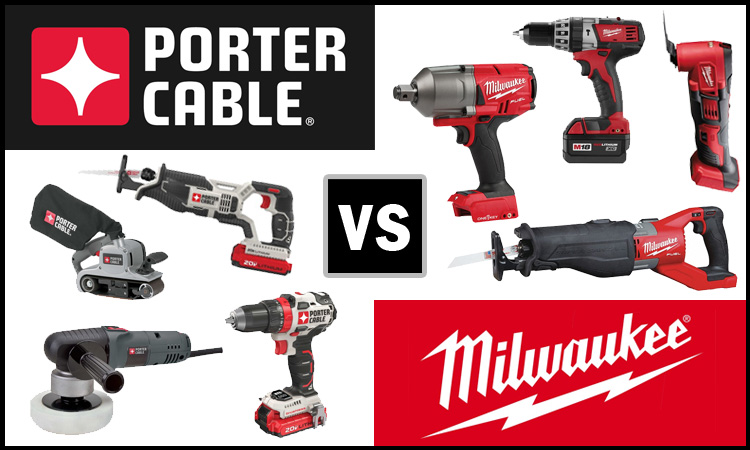
DIY enthusiasts and craftsmen alike have never had it better, in terms of the array of quality tools currently available. In fact, there are a nearly endless number of highly-regarded manufacturers involved in the production of such tools on an annual basis. This often leaves consumers to compare multiple brands, in a bid to decide how best to invest their money.
Two such brands that are often compared are Porter-Cable and Milwaukee. Though both brands have been around for decades, each has taken a decidedly different approach to production, targeting drastically different customer bases. For this reason, we have decided to outline the major differences between these two storied brands.
The following is a side-by-side comparison of Porter-Cable and Milwaukee, based upon a range of criteria.
History
The Porter-Cable and Milwaukee tool companies have both been around for over 100 years. Their long and storied histories have made them mainstays in the world of power tools.
The following is a brief history of both Porter-Cable and Milwaukee’s emergence into the power tool world.
About Porter-Cable Tools
We must travel back in history to 1906 for the birth of the Porter-Cable company. It first began as a jobbing machine and tool shop and was located in Syracuse, New York. Over the next few years, the company began to produce and market common items such as pencil sharpeners, gas lamps, and automatic tire pumps.
It was later in 1926 when Porter-Cable delved into power tool production, with the unveiling of their own line of portable sanders. Following shortly in 1928, was the release of a High-Speed Helical Gear Drive Saw which revolutionized the circular saw. It was during this time that Porter-Cable’s name began to become known to the mainstream public.
In 1960, Porter-Cable’s operations were relocated to Jackson, TN when the company was purchased by Rockwell Industries. At about the same time, Porter-Cable’s product catalog started to expand with first the invention of a portable band saw and then later the first high-speed, small orbit finishing sander.
After Porter-Cable’s acquisition by Rockwell Industries, the company turned its manufacturing focus towards producing economically-priced consumer-grade tools, to be in direct competition with Black & Decker. Rockwell also decided to drop the Porter-Cable name, bringing the brand itself a certain level of anonymity.
Pentair, Inc. purchased Porter-Cable in the mid-1980s and restored the official name of Porter-Cable to the line of tools. Pentair, Inc. continued to focus on the production of economical consumer-grade tools, thus making the professional line obsolete from the market in its entirety by the end of the decade.
Ironically, after many years of being full force competitors, Porter-Cable was purchased by Black & Decker in 2004. Today, Porter-Cable is still headquartered in Jackson, TN, though the majority of its manufacturing is done elsewhere.
Related: Porter-Cable vs DeWalt
About Milwaukee Tools
At the end of World War I, automobile pioneer Henry Ford approached tool maker A.H. Petersen with a unique request. Ford suggested a lightweight, portable 4″ drill be created. Peterson agreed and would go on to create the “Hole Shooter” which weighed just 5 pounds and was powered by a Westinghouse motor.
The partnership of A.F. Siebert and A.H. Petersen resulted in the formation of the A.H. Petersen Company. However, an early factory fire crippled this fledgling company, bringing about financial ruin. But Siebert would eventually go on to acquire the business’s remaining assets, officially establishing the Milwaukee Electric Tool Corporation.
During World War II, the “Hole Shooter” was widely employed by American armed forces in the manufacture of military aircraft, further boosting Milwaukee’s reputation. Then, in 1951, Milwaukee debuted their revolutionary Sawzall reciprocating saw. The company’s 1/2″ right-angle drill was also a notable product during this time.
Milwaukee was purchased by Amstar in the 1970s, which triggered a surge in industrial growth. During the 1970s, 1980s, and 1990s, several new tool products and warehouses appeared across the southeast United States.
Presently, Techtronic Industries Company owns the Milwaukee Tool Company and has over a thousand employees around the world. The company is most recognized for its manufacturing of high-quality portable power tools.
Read Also: Milwaukee vs Craftsman Tools
Manufacturing
Many consumers place substantial value upon a given company’s manufacturing practices. For this reason, we have outlined Porter-Cable and Milwaukee’s manufacturing practices, allowing consumers to make an informed purchasing decision.
Where Are Porter-Cable Tools Made?
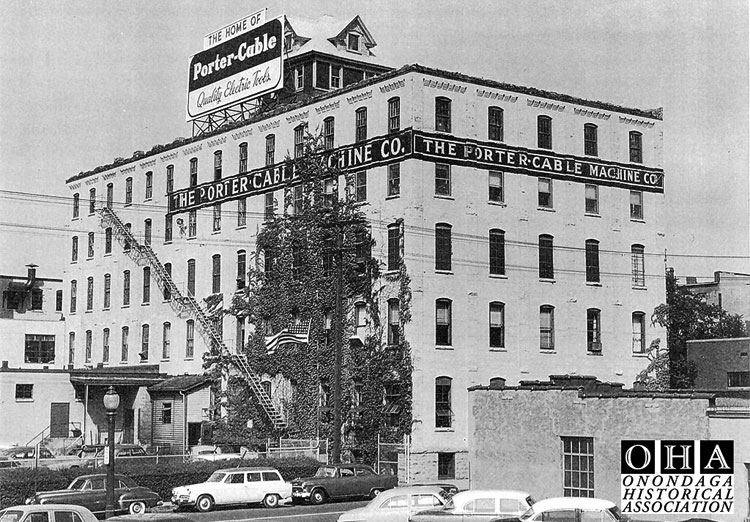
Initially, Porter-Cable tools were all produced in the United States. In the earliest years, the company’s manufacturing facilities were located in Syracuse, New York. After the company’s acquisition by Rockwell Industries, production facilities were moved to Jackson, TN.
Today, the Tennessee location is used primarily as a warehouse, while the vast majority of Porter-Cable’s current production takes place in Mexico and China.
See Also: Porter-Cable vs Ryobi
Where Are Milwaukee Tools Made?
Milwaukee Tools headquarters are in Brookfield, Wisconsin and its tools are produced both domestically and internationally, much like other quality brands. The following cities are home to the majority of Milwaukee’s manufacturing and warehousing efforts in the United States:
- Greenwood, Mississippi
- Jackson, Mississippi
- Mukwonago, Wisconsin
- Olive Branch, Mississippi
Milwaukee produces the majority of their portable, battery-powered tools overseas. China and Europe are the primary sites for these overseas manufacturing plants, but it’s possible that others exist elsewhere.
See Also: Milwaukee vs Makita Tools
Product Line
Porter-Cable and Milwaukee have both strived to fulfill the needs of consumers, thereby offering comprehensive lines of tools. In fact, both of these manufacturers have plenty to offer the average consumer for their day-to-day tool needs.
The following is a general overview of Porter-Cable and Milwaukee’s product portfolios.
Porter-Cable
Porter-Cable’s popular line of 20V max power tools is known for its use of a universal battery and charging system. This allows the tools within this series to share a common battery design making them versatile in the work environment allowing for less equipment needed.
The most popular tools in this line include drills, reciprocating saws, circular saws, and impact drivers.
Porter-Cable also offers a complete line of corded and cordless tools that target the woodworking sector of consumers. The company carries a wide variety such as planers, joiners, routers, and sanders.
Everything a dedicated woodworker needs. Porter-Cable continues to expand its line of additional cordless 20V MAX tools and corded varieties on a yearly basis to match the needs of the market.
Besides their lineup of power tools, Porter-Cable also produces and markets a wide array of power tool accessories. Some of the most notable of these accessories include multiple specialty drill bits, hole saw bits, joining biscuits, sanding discs and belts, and a variety of fasteners.
Milwaukee
Milwaukee offers an unrivaled variety of portable power tools, both for DIY and professional usage. These products cover a wide range of uses, ranging from home improvement to hobbies and auto maintenance. Milwaukee’s portable power tools are available in a number of different power levels, allowing for arguably best in class versatility.
Milwaukee’s M12 lineup is made up of some of the most popular power tools on the market. These tools are small and light, making them perfect for do-it-yourself or hobbyist work at home or away. That said, M12 tools are also powerful enough for some contractor use as well.
The Milwaukee M18 line of portable power tools caters to the demands of consumers looking for a modest boost in power. Currently, this collection includes more than 200 tools, including cordless drills, circular saws, and impact wrenches, among other things.
Milwaukee began producing and marketing its own distinctive range of hand tools in 2010, created for professionals with high standards. Screwdrivers, wrenches, utility knives, drill bits, and tape measures are just a few of the most well-known Milwaukee hand tools.
Related: Milwaukee vs Snap-On Tools
Technology
Porter-Cable and Milwaukee have both served as innovators within the power tool industry. A desire to meet the consumer’s ever increasing needs for home and job keeps them searching and striving to bring new and innovative designs to the public.
The following are several of Porter-Cable and Milwaukee’s most notable technological advances.
Porter-Cable
20V MAX Technology
For the most part, Porter-Cable power tools now utilize the manufacturer’s 20V MAX power supply system, which increases versatility among its tools. This system allows consumers to share batteries and chargers between multiple tools, thereby simplifying the task of powering even an extensive job site.
Jobsite Solutions
Porter-Cable uses its innovative 20V MAX technology to produce much more than a simple lineup of tools. The company also produces a series of shop-duty specific tools and conveniences that utilize the same technology.
Some of the most noteworthy additions to this line include shop vacuums, LED spot/work lights, and radios.
Storage/Charging Solutions
Porter-Cable has created a unique way to transport, store, and charge batteries utilized within their 20V MAX line.
The company’s 20V MAX Storage Bag allows consumers to store up to 10 individual batteries and is capable in only 40 minutes of fully charging two 20V MAX batteries at a time.
In addition, the tool bag itself includes a built-in job site radio and cord management system internally and externally.
Milwaukee
REDLITHIUM Batteries
Milwaukee REDLITHIUM batteries are built for the toughest jobsite conditions and offer unmatched performance in extreme weather. With up to 2x more run time, 20% more power and 2x more life than standard batteries, REDLITHIUM batteries are considered by many to be the most advanced on the market.
One Key App
This tool management app, available for both Android and iOS, allows users to keep track of the status and location of each portable Milwaukee power tool they own, as well as browse through a variety of inventory options.
Warranty and Service
Warranty and customer service are both primary factors when one is looking to make a substantial investment in tools. In fact, a tool is of little value, if not covered by a solid warranty that works as hard as you do.
The following is a synopsis of Porter-Cable and Milwaukee’s current warranty policies.
Porter-Cable
To begin, Porter-Cable offers a 90-day money back satisfaction guarantee. If you are not completely satisfied with the performance of your Porter-Cable tool for any reason, you can return it within 90 days from the date of purchase, for a full refund with no questions asked. However, consumers should know that a receipt is required.
All Porter-Cable tool purchases include a 1-year service plan. This policy states that the company will maintain the tool and replace worn parts caused by normal use, for free, any time during the first year after purchase.
However, many of the company’s tools are covered by a longer 3-year limited warranty. This warranty states that the company will repair, without charge, any defects due to faulty materials or workmanship for 3 years from the date of purchase on any tool carrying this policy.
This limited warranty does not cover defects due to normal wear, tool abuse, or damage caused where repairs are done by non-authorized service centers.
Milwaukee
The majority of Milwaukee power tools come with a 5-year limited warranty which promises that the tool will be free of manufacturing and workmanship flaws for 5 years after purchase.
This warranty does not cover damage caused by wear and tear resulting from normal usage. Any attempted tool modification or repair by an unlicensed individual will also invalidate this guarantee, thus any further coverage is irrelevant.
Milwaukee does not cover a number of its individual power tools under the warranty terms mentioned above. In such circumstances, as determined by Milwaukee, the tool in question will be covered by a separate warranty policy.
Porter-Cable vs Milwaukee: And The Winner Is…
In many ways, comparing Porter-Cable and Milwaukee is like comparing apples to oranges, as each of these brands caters to a different consumer base. While Porter-Cable’s products are largely aimed at DIY enthusiasts, Milwaukee’s tools are produced to survive heavy, prolonged use in the trades.
For this reason, we must present Milwaukee with our best of the best honors. Though you will certainly pay more for Milwaukee’s products, you also get a lot of bang for your buck. Milwaukee offers an extensive portfolio of tools, all of which are designed to last.
Additionally, Milwaukee offers the most comprehensive warranty policy in the entire power tool industry, with many products being covered for up to 5-years following purchase. Because of this, any investment made with Milwaukee is an investment made for the long term.


